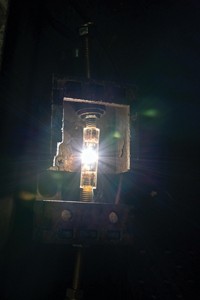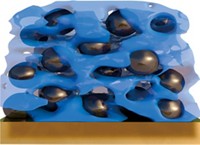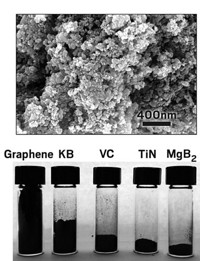Advertisement
Grab your lab coat. Let's get started
Welcome!
Welcome!
Create an account below to get 6 C&EN articles per month, receive newsletters and more - all free.
It seems this is your first time logging in online. Please enter the following information to continue.
As an ACS member you automatically get access to this site. All we need is few more details to create your reading experience.
Not you? Sign in with a different account.
Not you? Sign in with a different account.
ERROR 1
ERROR 1
ERROR 2
ERROR 2
ERROR 2
ERROR 2
ERROR 2
Password and Confirm password must match.
If you have an ACS member number, please enter it here so we can link this account to your membership. (optional)
ERROR 2
ACS values your privacy. By submitting your information, you are gaining access to C&EN and subscribing to our weekly newsletter. We use the information you provide to make your reading experience better, and we will never sell your data to third party members.
Energy Storage
Single-crystal lithium-ion battery cathode material resists crumbling
Nickel-rich compound may extend lifetime of electric vehicle batteries
by Mitch Jacoby
December 17, 2020
| A version of this story appeared in
Volume 98, Issue 48
Battery-powered electric vehicles, and the environmental benefits they provide compared with those fueled by hydrocarbons, could become far more prevalent if the batteries lasted much longer and were cheaper than ones used today.
One strategy toward that outcome is to replace much of the pricey cobalt found in battery cathodes with low-cost nickel, and one target for this strategy is the nickel-manganese-cobalt (NMC) cathodes now used in some lithium-ion batteries. Battery manufacturers would like to increase the proportion of nickel relative to cobalt in NMC cathodes. Doing so would not only reduce battery cost but also boost the charge capacity because of nickel’s electrochemical properties.
But previous studies have shown that raising the nickel content in NMC cathodes triggers harmful reactions—for example, with the electrolyte solution—that quickly degrade batteries. The process often causes micrometer-sized cathode particles to crumble, eventually rendering the battery unable to recharge. Jie Xiao of Pacific Northwest National Laboratory and coworkers have now come up with a way around those problems, making an especially rugged and nickel-rich NMC cathode material. The team has also uncovered the way the material changes physically over charging cycles, a finding that could help researchers further improve the cathodes.
The key to the work was devising a method for growing micrometer-sized NMC single crystals containing nearly 80% nickel—an increase in nickel content of 30–40% over some NMC materials. Compared with typical NMC cathodes, which are micrometer-sized agglomerates of nanocrystals, the single-crystal form has fewer sites where unwanted reactions can occur, is less susceptible to crumbling during charging cycles, and can store about 25% more charge (Science 2020, DOI: 10.1126/science.abc3167).
Although the hardy material resists crumbling, it’s not indestructible. Battery tests and microscopy revealed that during charging and discharging, the particles’ microscopic layers shift back and forth, a bit like cards sliding partway out and then back into a deck. The sliding, which is mostly reversible and caused by lithium ions moving in and out of the material, eventually causes tiny cracks to form in the particles, which begins the cathode’s decay.
Having identified this mechanism, the team is studying ways to minimize the sliding damage. Initial results indicate that keeping the particles smaller than 3.5 µm and operating the cathodes at about 4.2 V, a typical battery voltage, should help make the tough particles even tougher.
Describing the study as “interesting and impactful,” M. Stanley Whittingham of Binghamton University, who won the Nobel Prize in Chemistry for his work on lithium-ion batteries, says these results give great guidance for using such materials in commercial systems with very high energy density.
And Shirley Meng, a battery specialist at the University of California San Diego, remarks that not only are the synthesis results impressive, but so too is the detailed microscopy analysis, which shows why this material is durable.





Join the conversation
Contact the reporter
Submit a Letter to the Editor for publication
Engage with us on Twitter